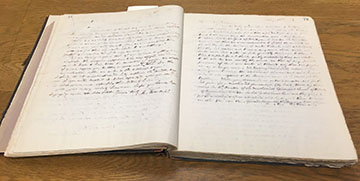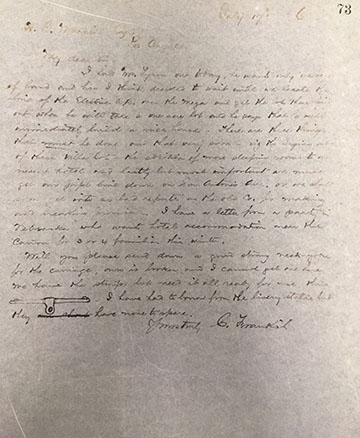Before the photocopier, companies and businesses had to handwrite copies for their records. By the end of the 19th century, businesses
were using a “copy book” or “wet letter book” which consisted of sometimes a
1000 pages of razor thin tissue paper bound in a hard cover.
How the copy book worked is that the letter to be copied would
be placed under the right-hand page, while the left-hand page would be dampened
with water in order to make the copy. The
book was then closed and squeezed in a copy or letter press. When the book was
opened, the letter would be taken out to dry and its copy would remain on the
right-hand side of the book. When the Ontario Land & Improvement Co. was
conducting business in the 1880s, the use of such copy books would have been
standard practice in their offices.
This week, I’ve been scanning the pages of a copy book
consisting of letters written by the Manager of the Ontario Land &
Improvement Co., Charles Frankish. The dates in the copy book range from April
4, 1886 to June 11, 1888, ranging in legibility due to age and perhaps even the quality of the print made by the
individual making the copies. The ink in some letters is prominent and clear, while
in others it is faded due to natural age or blurred during the copying process.
It’s interesting to think about how the technology used to
make the copies in the copy book were made with technology that was just as
innovative as the book scanner I’m using to make digital copies of that 19th
century wet letter copy book. How will
we be making copies of our digital copies 150 years from now?
Below are photographs of individual letters from the
Frankish wet letter book.



